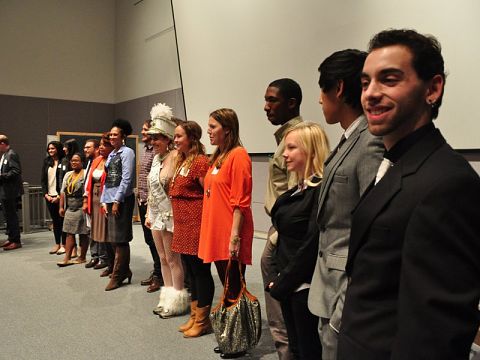23 January 2015


Imagine you have an idea. A great idea. An idea for a social venture that could change New Orleans.
Maybe it’s a bold new solution for attracting minority teachers. Maybe it’s a new app that streamlines disaster management.
Now imagine that you have to pitch this idea in just 180 seconds… in front of a packed auditorium.
Next Wednesday, January 28, 10 semi-finalists will face this challenge in one of two 2015 PitchNOLA competitions.
Hosted by Propeller and Tulane University and sponsored by the W.K. Kellogg Foundation and the Lang Family Foundation, the live pitch competition, PitchNOLA: Community Solutions Live Pitch Competition, serves as a platform for community members to “propose their solutions to local challenges with the chance at seed funding, project support, and media coverage to make it happen.”
The Community Solutions umbrella includes all ideas that support workforce development, children and families, social justice and the environment.
The top four pitches receive cash prizes -- first place receives $5,000; second place, $3,000; third, $2,000; and fourth place, $1,000. The audience will also have an opportunity to vote on an audience-funded favorite award, the winner of which receives a minimum of $500.
So what exactly makes a perfect pitch?
According to those who have gone through this process before, simplicity is a paramount element of a winning pitch.
“In three minutes, it’s natural you’re going to want to jam in as much information as possible,” says Teddy Nathan, Executive Director of NetWork Voluntours (formerly Crescent City Connections) and previous PitchNOLA winner. “But that’s not what makes a successful pitch. You want to be to the point, simple. A plus B equals C type of scenario where you leave the audience and the judges without many gaps to exploit or question.”
The pitcher’s grand plan, Nathan says, must be boiled down and easy for the audience to follow.
“The last thing you want to do is have people walk away and say, ‘What was that? That was three minutes of chaos’,” Nathan explains. “The idea is for everyone, who otherwise know nothing about your venture, to walk away saying, ‘I get it. Sounds like an awesome idea’. And if you can achieve that in three minutes, I think it’s a success.”
The judges look for and evaluate three main criteria in each pitch: social impact, the organizational model and the business model.
Alex Rawitz, manager of IDEAx -- the accelerator program at the Idea Village business incubator, says putting together a pitch is scary for a lot of people, and because of this, they over-complicate the presentation.
“Imagine you’re talking to a friend who doesn’t know what you do,” Rawitz says. “How would you explain your idea to them? The formalness of the pitch forces people to change the way they talk. But people’s natural style is not something that should be lost in the pitch. It should not override the person’s personality and vision for the business.”
Both pitch experts also stressed the importance of strong articulation, declarative language and PowerPoint slides that are additive, rather than redundant.
Hitting the three main content areas while speaking clearly and comfortably make for good pitches.
But the best presenters, Rawitz says, make the audience truly believe in them by the end of the three minutes.
“Can you make people feel like you are the right person to execute this idea?” Rawitz poses. “It’s all about the confidence you portray.”
Ventures mentioned in this post

